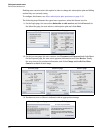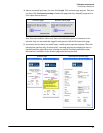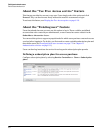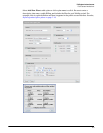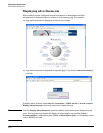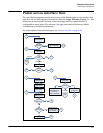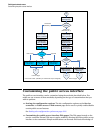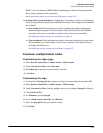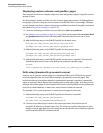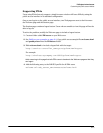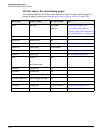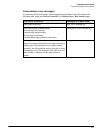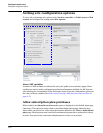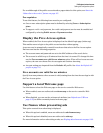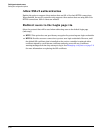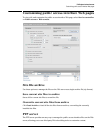
Public/guest network access
Customizing the public access interface
Displaying custom welcome and goodbye pages
This example shows how to display unique welcome and goodbye pages for specific users or
groups of users.
For this example, assume you have two sets of users: basic and premium. To distinguish the
two groups, you have set up the user accounts on the RADIUS server accordingly. (Perhaps
you are using access lists to restrict each group to a different section of the public network as
described in Access list example on page 9-37).
1. Create the following two folders on your Web sever: basic and premium.
2. See Public access examples on page 8-4. Copy public access sample files welcome.html
and goodbye.html into each both folders and customize them for each set of users.
3. Add the following entry to the RADIUS profile for the basic users.
welcome-url=web_server_URL/basic/welcome.html
goodbye-url=web_server_URL/basic/goodbye.html
4. Add the following entry to the RADIUS profile for the premium users.
welcome-url=web_server_URL/premium/welcome.html
goodbye-url=web_server_URL/premium/goodbye.html
5. Add the following entry to the RADIUS profile for the service controller. This gives all
unauthenticated users access to the Web server hosting the goodbye page.
access-
list=loginserver,ACCEPT,tcp,web_server_IP_address,port_number
Delivering dynamically generated content
Another way to generate custom pages is to add placeholders in the URLs for the custom
external pages and then use server-side scripting to dynamically create the pages. This
method provides a powerful mechanism to automatically generate completely customized
pages on a per-user basis. Rather than designing one or more static pages, as in the previous
example, the custom pages in this example can be built on-the-fly based on user preferences
stored in a central database, or based on a user’s location within the network.
For example, if you want to generate a custom welcome page for each user:
1. Add the following entry to the RADIUS profile for the service controller.
welcome-url=web_server_URL/premium/
welcome.html?loginname=%u&IPaddress=%i
2. Create a server-side script to retrieve the user’s login name (%u) and the service
controller IP address or domain name (%u). The script can use this information to then
display a custom page based on user’s preferences (stored in the server database) and the
user’s location within the wireless network.
8-14



